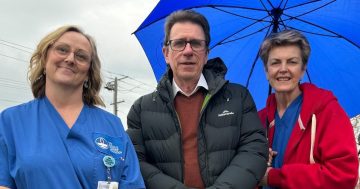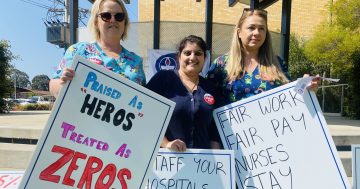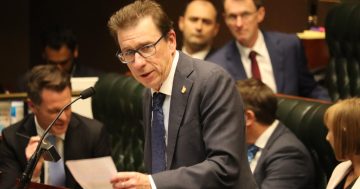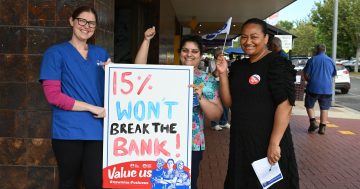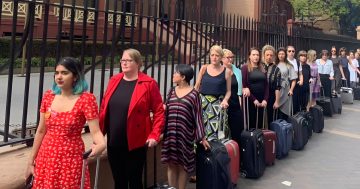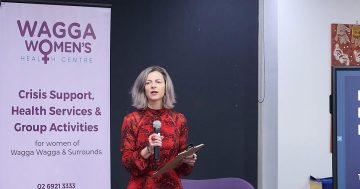
Wagga members of the NSW Nurses and Midwives’ Association protesting in 2022 outside the Wagga Base Hospital. Photo: Shri Gayathirie Rajen.
With remote and regional health care under increasing strain in NSW, the government is doubling the incentives, from $10,000 to $20,000, to try to attract and retain more skilled staff in hard-to-fill and critical roles.
“No matter where you live in NSW, you should have access to vital services but that isn’t possible without our essential health workers,” said Premier Chris Minns.
“I’m confident that by doubling the incentives on offer, we can attract more health staff to our regions.”
With most regional health districts experiencing nursing shortages, attracting and retaining health workers is an ongoing challenge in regional LHDs and Health Minister Ryan Park hoped the extra financial lure would be a positive step.
“I’m confident today’s announcement, together with our recently approved expansion of the Single Employer Model, will result in more clinicians choosing to further their careers in regional NSW,” he said.
“I’m determined to tackle some of the key healthcare issues facing our regional communities, including prioritising the regional health workforce.”
Incentive packages feature a variety of benefits, including sign-on bonuses, retention payments, relocation assistance and housing, additional leave and salary boosts.
Packages are scaled and increase in value in more remote locations.

Health Minister Ryan Park with Wagga MP Dr Joe McGirr during a visit to Wagga Base Hospital. Photo: Supplied.
Member for Wagga Wagga Dr Joe McGirr is chairing a select committee to examine the implementation of the recommendations of the Upper House Inquiry into Rural and Regional Health.
He cautiously welcomed the announcement of incentives to lure more workers away from the cities.
“I obviously welcome anything that’s going to help get health professionals to the bush because it’s our number-one problem and that is why the first task of the select committee is looking at workforce,” he said.
“However, it also clearly shows that the previous strategy hasn’t been working and it underlines the need to be monitoring what is happening to the recommendations of that previous report.”
He added that, while additional money for the regions was a good thing, it was only part of the solution.
“Where we do the training and how we support professionals when they arrive in communities are just as important,” Dr McGirr said.
“How do we get the system set up so we can do that? I think we’ve got a lot more work to do in those areas.”
The Government has acknowledged that health staff dissatisfaction was exacerbated by the pandemic and the previous administration’s wages cap, but has now reached an agreement with the NSW Nurses and Midwives’ Association.
This week members agreed to accept the offered 4.5 per cent salary increase, including 0.5 per cent superannuation, after a statewide ballot saw 58 per cent support.
While it’s the biggest pay increase for NSW nurses and midwives in more than a decade, the association has pointed out that it still does not match inflation.
“We know that even among the members that voted yes, there is anger at the Government over the 4 per cent offer,” said NSWNMA assistant general secretary Shaye Candish in response to the agreement.
“There’s an awful lot of our members who have taken the 4 per cent because times are tough and they can’t wait any longer, but they all know that 4 per cent is not enough to help reform the healthcare system.”
Original Article published by Chris Roe on About Regional.







